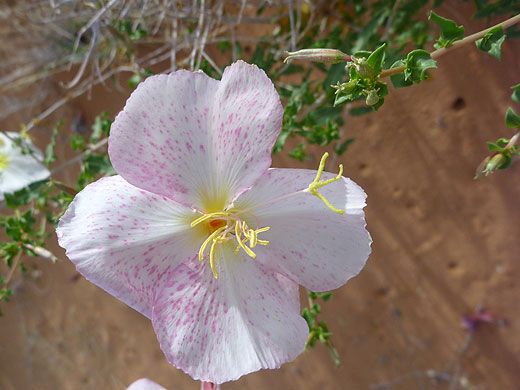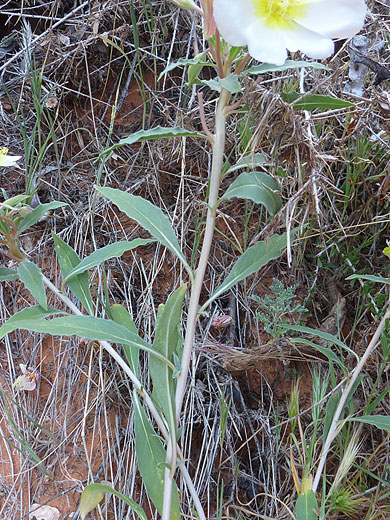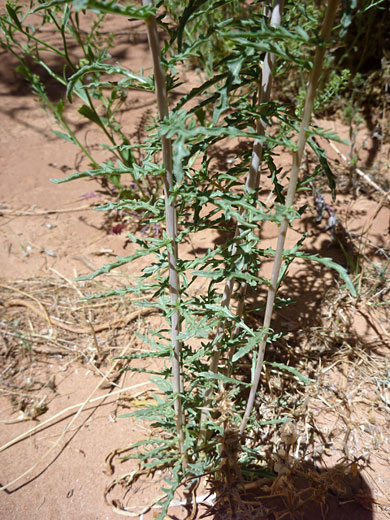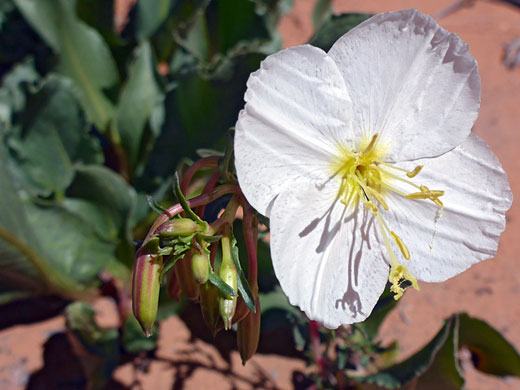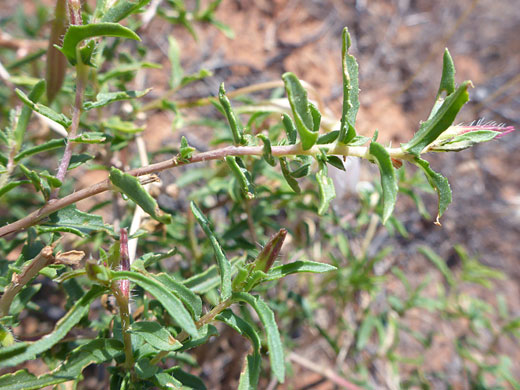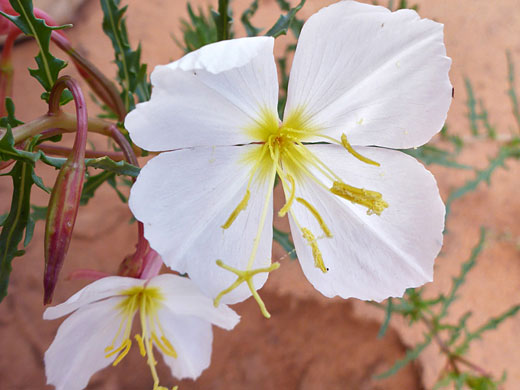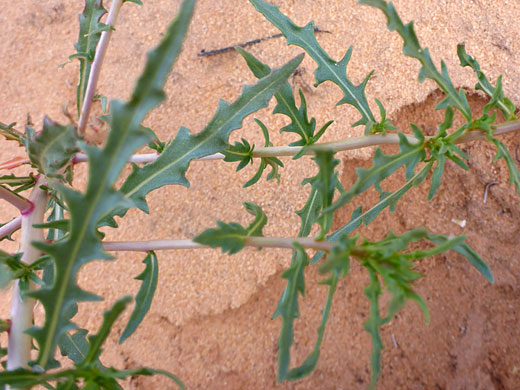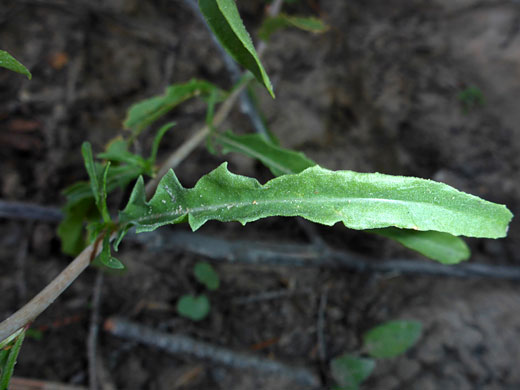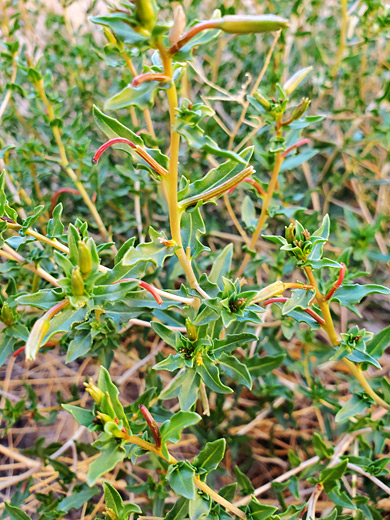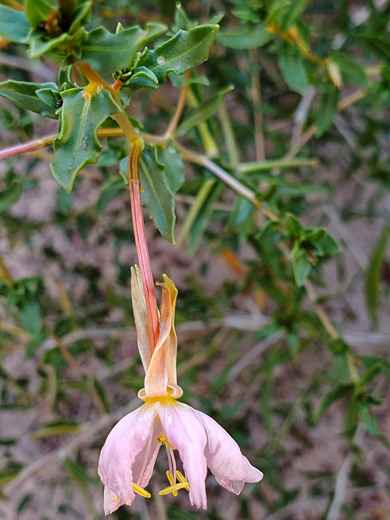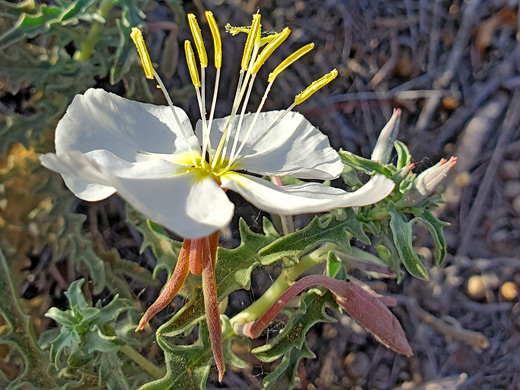Common names:
Pale evening primrose, white evening primrose
Family:
Scientific name:
Oenothera pallida
Main flower color:
Range:
Washington, Idaho and Montana, southeast to Texas. Absent from California
Height:
Up to 3 feet
Habitat:
Semi-desert locations; sandy or rocky places
Leaves:
Narrowly ovate, up to 4 inches long, with lobed or gently toothed edges
Season:
April to June
Unlike some other evening primrose varieties which stay close to the ground, oenothera pallida grows quite tall - up to 3 feet, bearing its four-petaled flowers along the upper portions of long, thin, curving, reddish stems. But like other species the flowers are large, about 3 inches across, white for most of the blooming period becoming pinkish when mature. Buds are reddish purple. The petals overlap only slightly or remain separate, and have a lime green patch at the base. They often have a distinct ridge down the middle, radiating out from the center. In the middle of the flower are thin stamens bearing yellow anthers, and a longer pistil.
On older plants the base of the stems becomes woody. All plant parts are hairless. The irregularly-toothed leaves and sprawling stems give the plant a somewhat untidy appearance. Stem leaves are similar in size to those around the base.
On older plants the base of the stems becomes woody. All plant parts are hairless. The irregularly-toothed leaves and sprawling stems give the plant a somewhat untidy appearance. Stem leaves are similar in size to those around the base.
All Contents © Copyright The American Southwest | Comments and Questions | Contribute | Site Map




